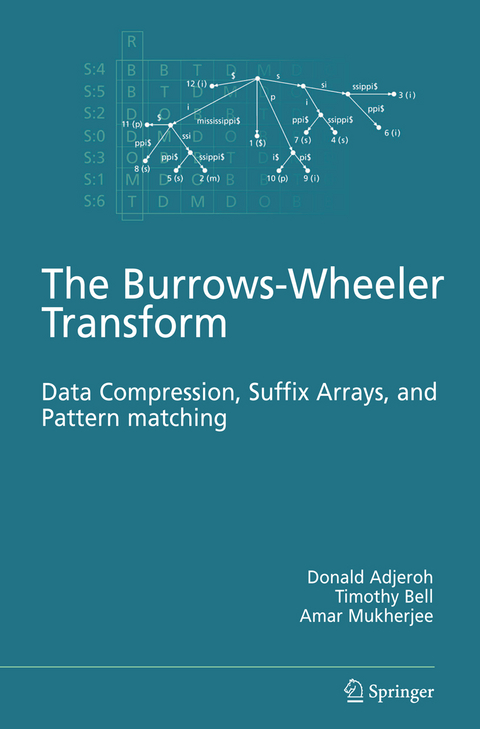
The Burrows-Wheeler Transform:
Data Compression, Suffix Arrays, and Pattern Matching
Seiten
2010
|
Softcover reprint of hardcover 1st ed. 2008
Springer-Verlag New York Inc.
978-1-4419-4628-7 (ISBN)
Springer-Verlag New York Inc.
978-1-4419-4628-7 (ISBN)
Here is a reference for seasoned professionals and researchers in the area that also provides a gentle introduction, making it accessible to senior undergraduate students or first-year graduate students embarking upon research in areas related to the BWT.
The Burrows-Wheeler Transform is one of the best lossless compression me- ods available. It is an intriguing — even puzzling — approach to squeezing redundancy out of data, it has an interesting history, and it has applications well beyond its original purpose as a compression method. It is a relatively late addition to the compression canon, and hence our motivation to write this book, looking at the method in detail, bringing together the threads that led to its discovery and development, and speculating on what future ideas might grow out of it. The book is aimed at a wide audience, ranging from those interested in learning a little more than the short descriptions of the BWT given in st- dard texts, through to those whose research is building on what we know about compression and pattern matching. The ?rst few chapters are a careful description suitable for readers with an elementary computer science ba- ground (and these chapters have been used in undergraduate courses), but later chapters collect a wide range of detailed developments, some of which are built on advanced concepts from a range of computer science topics (for example, some of the advanced material has been used in a graduate c- puter science course in string algorithms). Some of the later explanations require some mathematical sophistication, but most should be accessible to those with a broad background in computer science.
The Burrows-Wheeler Transform is one of the best lossless compression me- ods available. It is an intriguing — even puzzling — approach to squeezing redundancy out of data, it has an interesting history, and it has applications well beyond its original purpose as a compression method. It is a relatively late addition to the compression canon, and hence our motivation to write this book, looking at the method in detail, bringing together the threads that led to its discovery and development, and speculating on what future ideas might grow out of it. The book is aimed at a wide audience, ranging from those interested in learning a little more than the short descriptions of the BWT given in st- dard texts, through to those whose research is building on what we know about compression and pattern matching. The ?rst few chapters are a careful description suitable for readers with an elementary computer science ba- ground (and these chapters have been used in undergraduate courses), but later chapters collect a wide range of detailed developments, some of which are built on advanced concepts from a range of computer science topics (for example, some of the advanced material has been used in a graduate c- puter science course in string algorithms). Some of the later explanations require some mathematical sophistication, but most should be accessible to those with a broad background in computer science.
How the Burrows-Wheeler Transform works.- Coders for the Burrows-Wheeler Transform.- Suffix trees and suffix arrays.- Analysis of the Burrows-Wheeler Transform.- Variants of the Burrows-Wheeler Transform.- Exact and approximate pattern matching.- Other applications of the Burrows-Wheeler Transform.- Conclusion.
| Zusatzinfo | XII, 352 p. |
|---|---|
| Verlagsort | New York, NY |
| Sprache | englisch |
| Maße | 155 x 235 mm |
| Themenwelt | Informatik ► Datenbanken ► Data Warehouse / Data Mining |
| Informatik ► Theorie / Studium ► Algorithmen | |
| ISBN-10 | 1-4419-4628-4 / 1441946284 |
| ISBN-13 | 978-1-4419-4628-7 / 9781441946287 |
| Zustand | Neuware |
| Haben Sie eine Frage zum Produkt? |
Mehr entdecken
aus dem Bereich
aus dem Bereich
Datenanalyse für Künstliche Intelligenz
Buch | Softcover (2024)
De Gruyter Oldenbourg (Verlag)
74,95 €
Auswertung von Daten mit pandas, NumPy und IPython
Buch | Softcover (2023)
O'Reilly (Verlag)
44,90 €


